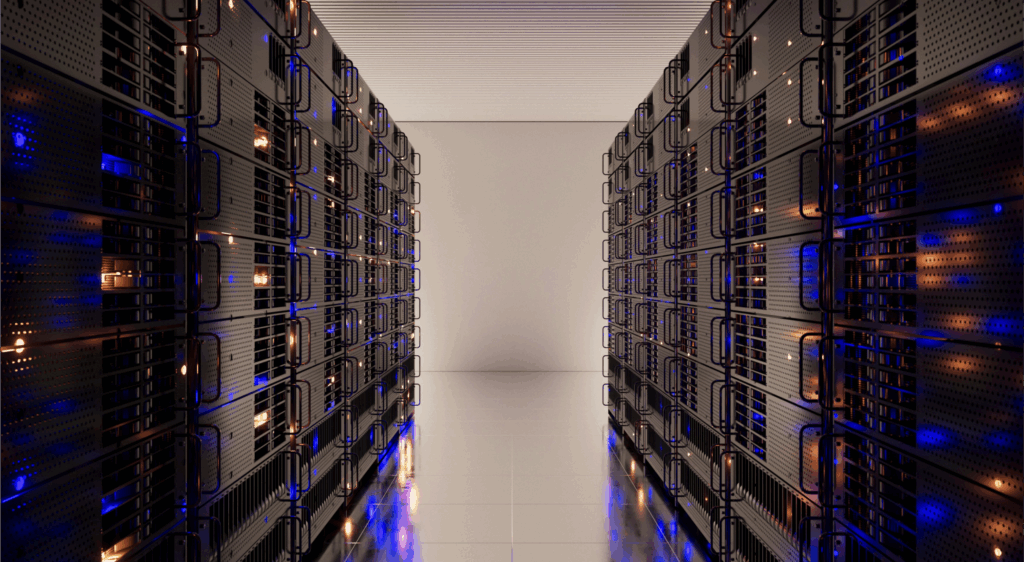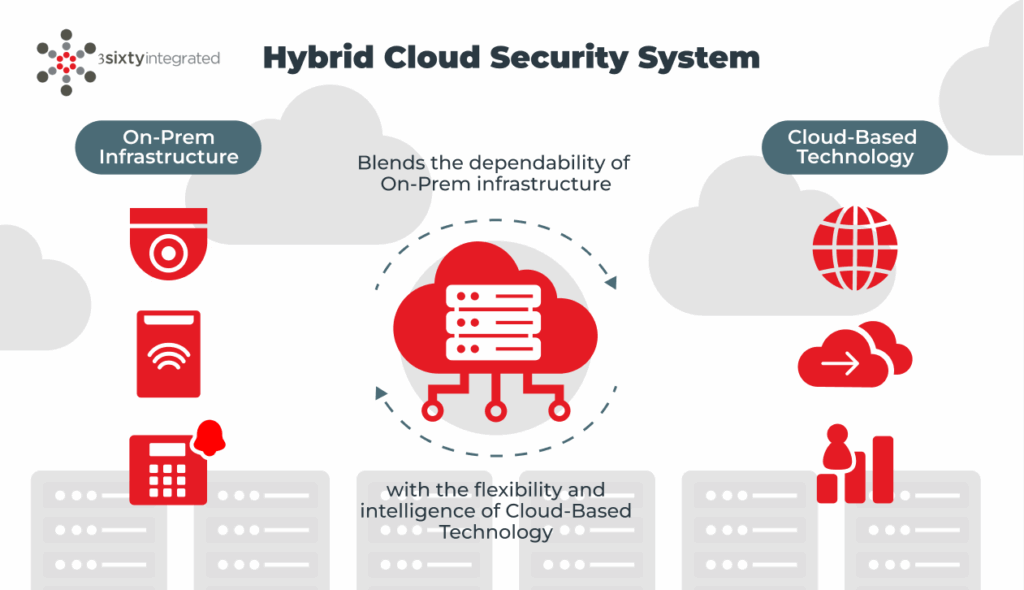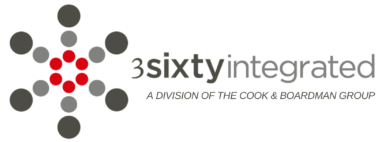
Hybrid Cloud is quickly becoming a cornerstone of modern physical security strategies, offering organizations greater flexibility, control, and scalability. By combining the reliability of existing infrastructure with the agility of cloud technology, hybrid systems give organizations a smarter way to strengthen security, while maintaining control of critical assets.
With 72% of organizations now adopting a hybrid approach to manage infrastructure and security operations, the shift toward more flexible, scalable systems is gaining significant momentum.
Here’s what hybrid cloud security means in practice, why more security teams are making it central to their long-term strategy and 5 critical questions they should be asking themselves before making the move.
What Is a Hybrid Cloud Security System?
Security teams today face mounting challenges and ongoing pressure to do more with less. Over the past five years, 60% of organizations have experienced breaches in their physical security infrastructure, underscoring the urgent need for smarter, more resilient solutions.
In practical terms, this means linking core systems, such as cameras, access control readers, and alarm panels, to cloud platforms that expand oversight, enable remote management, and simplify scalability.
The result is a cohesive security environment that extends across multiple locations and storage types, including on-premise, private cloud, or public cloud, offering improved visibility, centralized control, and future-ready flexibility.

Why Enterprises Are Moving to Hybrid Now
The move toward hybrid cloud security is gaining momentum, and it’s backed by data. According to Genetec’s 2023 report, 66% of organizations plan to store and manage more of their physical security data in the cloud.
Hybrid cloud makes it easier to scale infrastructure as needed, easing the burden of large capital investments in new hardware. This is especially valuable for organizations with multiple locations or fluctuating operational demands.
Organizations gain the ability to:
- Maintain control over critical on-site hardware and data.
- Enable remote access to systems for faster response and oversight.
- Scale efficiently as operations grow or change.
- Manage multiple sites through a single, cloud-connected platform.
The Cost Case for Hybrid Cloud
Cost is often one of the biggest factors driving the move to hybrid cloud. Full system replacements especially across multiple locations are rarely practical or cost-effective.
For instance, a security manager responsible for multiple retail locations may find that replacing every NVR or camera to enhance surveillance isn’t just cost-prohibitive, it’s rarely required.
A hybrid cloud approach offers a more strategic alternative. It allows organizations to extend the life of existing equipment while integrating cloud-based tools for centralized monitoring, remote access, and intelligent analytics.
This model enables security teams to:
- Oversee all locations from a single interface.
- Respond to incidents more quickly.
- Upgrade infrastructure in phases, aligned with operational budgets.
The result is a smarter path to modernization that minimizes disruption while maximizing long-term value.
Key Questions for Modernizing Physical Security with Hybrid Cloud
As operations grow more complex and threats become more sophisticated, organizations need security systems that are flexible, connected, and built for long-term performance.
While hardware like cameras, access readers, and sensors remains essential, simply swapping out old devices for newer models isn’t enough.
True modernization comes from how these technologies are integrated, managed, and optimized across the organization.
Five questions security teams should be asking themselves:
1. Are we getting real-time visibility across all our locations or just reacting after the fact? Hybrid cloud enables centralized monitoring and faster response, helping teams shift from reactive to proactive security.
2. How easily can we manage and update our systems remotely? If your team still needs to be onsite for routine changes, you’re missing opportunities for efficiency and responsiveness.
3. Are we stuck with legacy infrastructure or building a system that can evolve? Modernization doesn’t require a full rip-and-replace. It’s about creating a foundation that can scale with your needs.
4. Can we support different sites with different security requirements? From high-traffic campuses to remote facilities, hybrid cloud facilitates a tailored approach.
5. Are we using the analytics our systems generate to its full potential? Cloud-based analytics can uncover insights that improve both threat response and strategic planning.
Whether it’s protecting healthcare campuses, school districts, logistics hubs, or retail centers, hybrid cloud gives organizations the adaptability to meet a wide range of physical security needs.
How Different Industries Are Leveraging Hybrid Cloud Technology
Industries adopting hybrid cloud technology are reshaping their physical security strategies. From a physical security perspective, this shift offers both opportunities and challenges, especially in sectors with complex asset protection needs.
Healthcare
Healthcare facilities are under constant pressure to safeguard patient data, maintain
compliance with HIPAA, and protect against theft or disruptions to patient care. Hybrid
cloud solutions support these demands by strengthening visibility and simplifying multi-site
management.
- Monitor and manage multiple facilities in real time without replacing legacy infrastructure.
- Retain local video storage for redundancy while enabling secure remote access.
Retail
Retail environments face daily risks from theft, fraud, and high employee turnover, all while operating on tight margins. Hybrid cloud solutions help centralize security management across stores while preserving in-store hardware.
- Access real-time video feeds across all locations while maintaining optimal POS system performance.
- Leverage cloud analytics to detect suspicious activity and streamline incident response.
Education
Educational institutions must protect students, staff, and assets across sprawling, high-traffic campuses. Hybrid models provide a practical path to modernize while meeting safety mandates
- Add cloud-based video and access control features while maintaining strict control in high-security areas.
- Support gradual upgrades to legacy equipment, avoiding the need for full system replacement.
Logistics and Distribution
Warehouses, fulfillment centers, and transport hubs demand 24/7 visibility and rapid response across geographically dispersed sites. Hybrid systems ensure reliability while keeping operations agile.
- Store footage locally in areas with limited connectivity for uninterrupted recording.
- Sync critical data to the cloud for centralized oversight and coordinated security efforts.
Across every industry, success depends on partnering with a physical security integrator who can design, deploy, and support solutions that effectively bridge existing systems with cloud-based technologies.
Why Hybrid Cloud Works Now
As physical security grows more complex, hybrid cloud systems offer a clear path forward, delivering the visibility, scalability, and control needed to support modern operations, all while preserving existing infrastructure.
Success with hybrid cloud isn’t just about the technology. It’s about having the right integration partner to guide planning, deployment, and long-term support. That’s where 3Sixty Integrated comes in.
If your team is exploring a hybrid cloud strategy, our experts can help you design a solution that fits your infrastructure, meets your compliance goals, and scales with your organization.
At 3Sixty Integrated, we are here to advance enterprise organizations across multiple verticals to develop and implement sustainable security solutions. QSRs deserve a security systems integrator partner that can align, anticipate and guide, and we are here to help. With over 19 years of experience, our team designs, installs, and maintains custom security solutions to keep your organization and assets safe and secure. Ready to get started? Contact us today to schedule a 30-meeting consultation or call us at (877) 374-9894.

